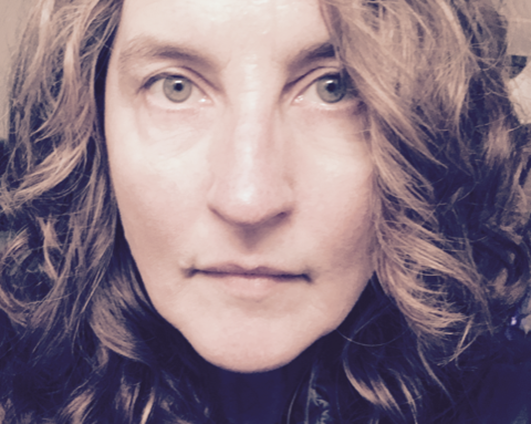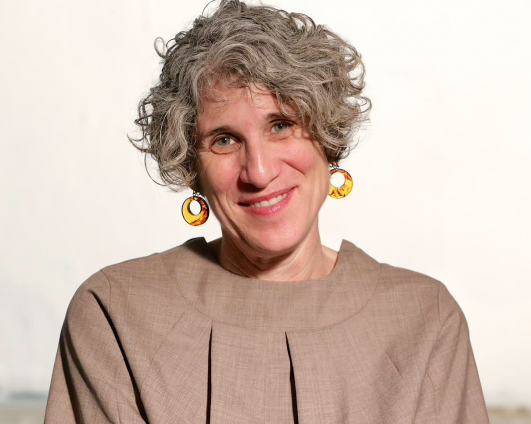Committed Media: USA Now
Sharon Daniel – Intervention and Inclusion: An Atlas of Structural Violence
Alexandra Juhasz – #100hardtruths-#fakenews: i-docs in an age of “fake news”
Intervention and inclusion: an Atlas of Structural Violence
In this paper, I will present work-in-progress on an interactive Atlas of Structural Violence as a case study through which I will question the potential of documentary practices to intervene and resist in this ‘moment of deep precariousness’. In the past I have argued that, as Nigerian author Chimamanda Adichie has said, “it takes more than one story” to address the consequences and root causes of structural racism, economic oppression and environmental injustice. I have always eschewed the now-dominant form of character generated narrative storytelling in favor of database-driven-multi-vocality – multiple voices speaking to the same conditions through the direct address of the interview. Now, in an attempt to expose the legacies and resist the present power of white supremacy I am exploring the use of the “Atlas”, as a trope and a form, to map the parallel experiences of communities at four very different sites where structural racism and white supremacy manifest to create zones of conflict and sacrifice.
Conflict Zones: Black American and Irish politics have been linked for several centuries. Admittedly, the historical background of the Northern Ireland conflict is highly contested and subject to interpretation. But, while on one level it was, and still is, a political struggle over the sovereignty and legitimacy of the state of Northern Ireland, the contemporary period of violence known as “the Troubles” began over a struggle for civil rights. The conflict was ignited by resistance to racial segregation, economic oppression and state violence – conditions much like those experienced by poor people of color in American conflict zones, like Ferguson, Missouri, where the epidemic of police violence against unarmed black citizens on the streets, the regime of criminalization of black life, and the subsequent incarceration of black bodies, constitute a form of ethnic cleansing.
Sacrifice Zones: African Americans and Native Americans have long been subjects of environmental racism. White power has always pushed people of color into the most degraded and perilous places – poisoning and abandoning them to face rising sea levels and super storms in toxic fence-line-shoreline communities like Port Arthur, Texas and Kivalina, Alaska. In Kivalina indigenous people living below the poverty line, without running water or toilets, adequate health care, quality education or access to employment face a future as climate migrants. In Port Arthur a largely black population lives in deteriorating public housing in the shadow of oil refineries along the gulf coast.
The Atlas is an effort to test “If” and “how” documentary practice can map the scale and scope of structural violence.
#100hardtruths-#fakenews: i-docs in an age of “fake news”
I will present #100hardtruths-#fakenews, an “‘i-doc in an age of “fake news’” that is one scholar and citizen’s personal and professional negotiation of platform politics in a time of media crisis. My project began (and lives) as an online digital literacy primer built to better understand, share resources about, and live within fake news. Initially written in real time over the first 100 days of the Trump administration, one also shaped by similar preoccupations and activities, the project initially made use of a sleek, modular digital architecture to house its many holdings: my own real-time thinking and response as well as an amalgam of a large host of multidisciplinary approaches and projects that occurred concurrently. My current steps have been to attempt to transform the online intervention into a placed-based, interactive digital media literacy pedagogy.
While some approaches to digital media literacy work to simplify—through to do lists, quick fixes, or sets of short-term remedies—#100hardtruths-#fakenews finds that the cultural, political, and personal underpinnings of this phenomenon are widespread and knotty. I believe that the most important contribution of the original digital primer is its diversity, complexity and internal contradictions. It’s hard to use and understand given its theoretical and artistic roots and multiplicity of holdings. But the crisis of fake news is not simple. To understand it, and move past it, we will need to make a deep, long-term commitment to better understanding its terms, our own implications within it, and our abilities to move and think outside of these structures. Focused, hands-on interactions within communities—making the best use of art, technology, and pedagogy—seem critical for responsive digital media literacy in the time of fake news. My talk will focus on how I have been using the primer to work on this complex crisis in community, over time, and in the places where we live and work (libraries, community colleges, community centers) via sustained, shared, public encounters. This approach is rooted in two core beliefs raised by the project itself: we all have internet truths from which we can build more complex understandings together; sharing our own hardtruths is a fundamental act of citizenship in the time of fake news.
Indeed, after the first 100 days and the completion of phase one of the project, I made my final pledge to “heed the poets’ call.” This is what I am now engaging, no easy matter: to intermix art and education, performance and pedagogy, as a new, inventive approach that I can contribute (with others), as a shared citizens’ response to media mayhem. My recent attempts have been to enliven four #hardtruths as a way into the project’s multiple, diverse and complex holdings and as a set of hopeful and helpful tactics against fake news: “fake news r us,” “virality is virility” “our truths trump fake news,” & “art answers to illicit questions.” At idocs, I would like to engage with fellow theorists and practitioners to share this world and imagine other possible approaches towards my goal: place-based, interactive media literacy for all citizens.


